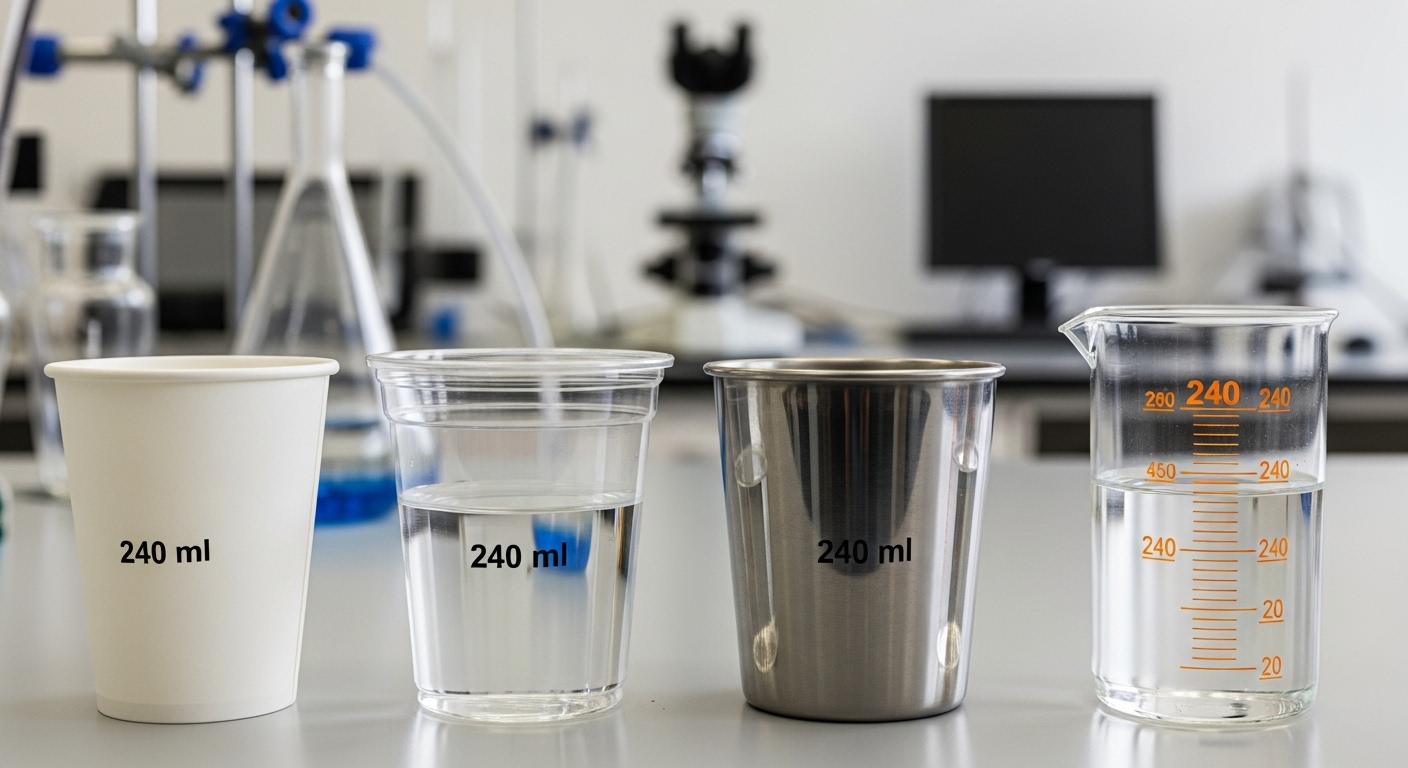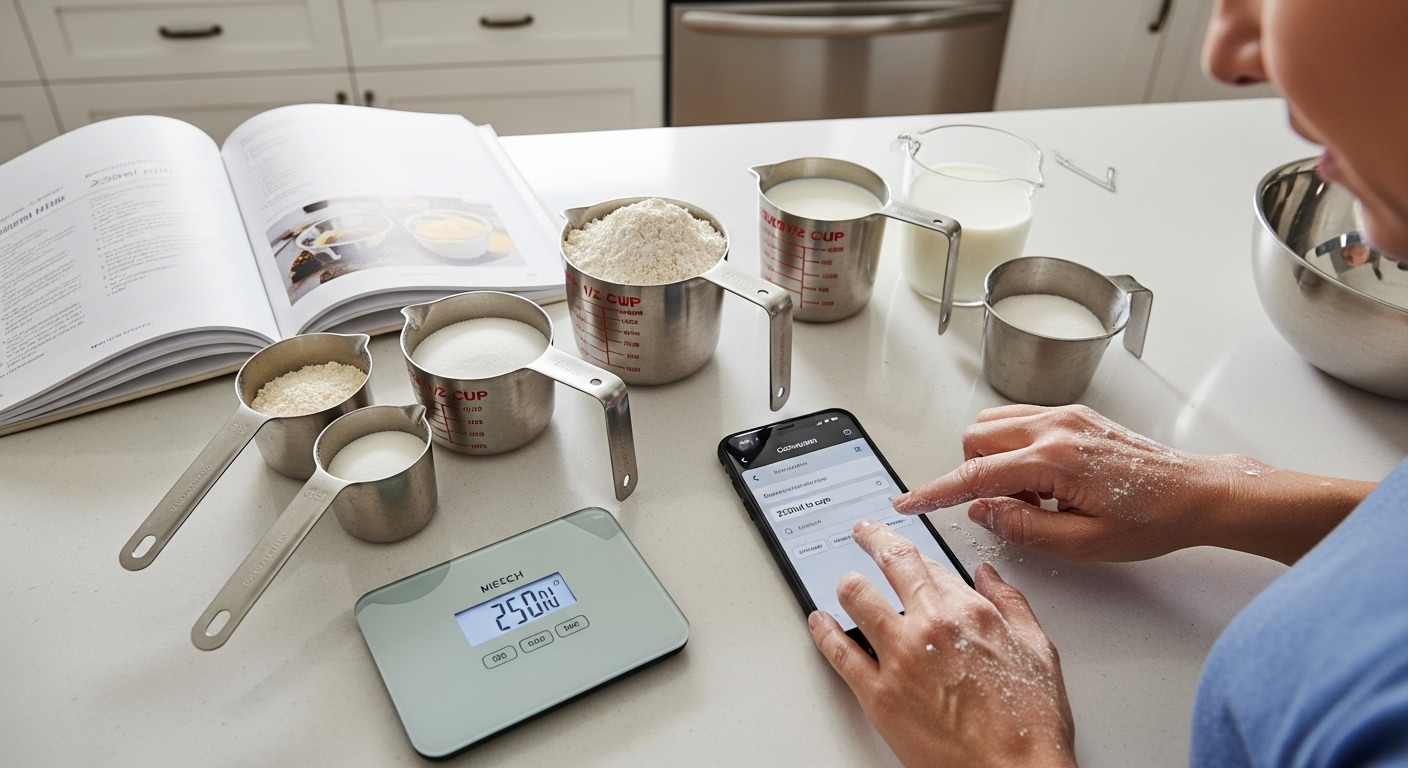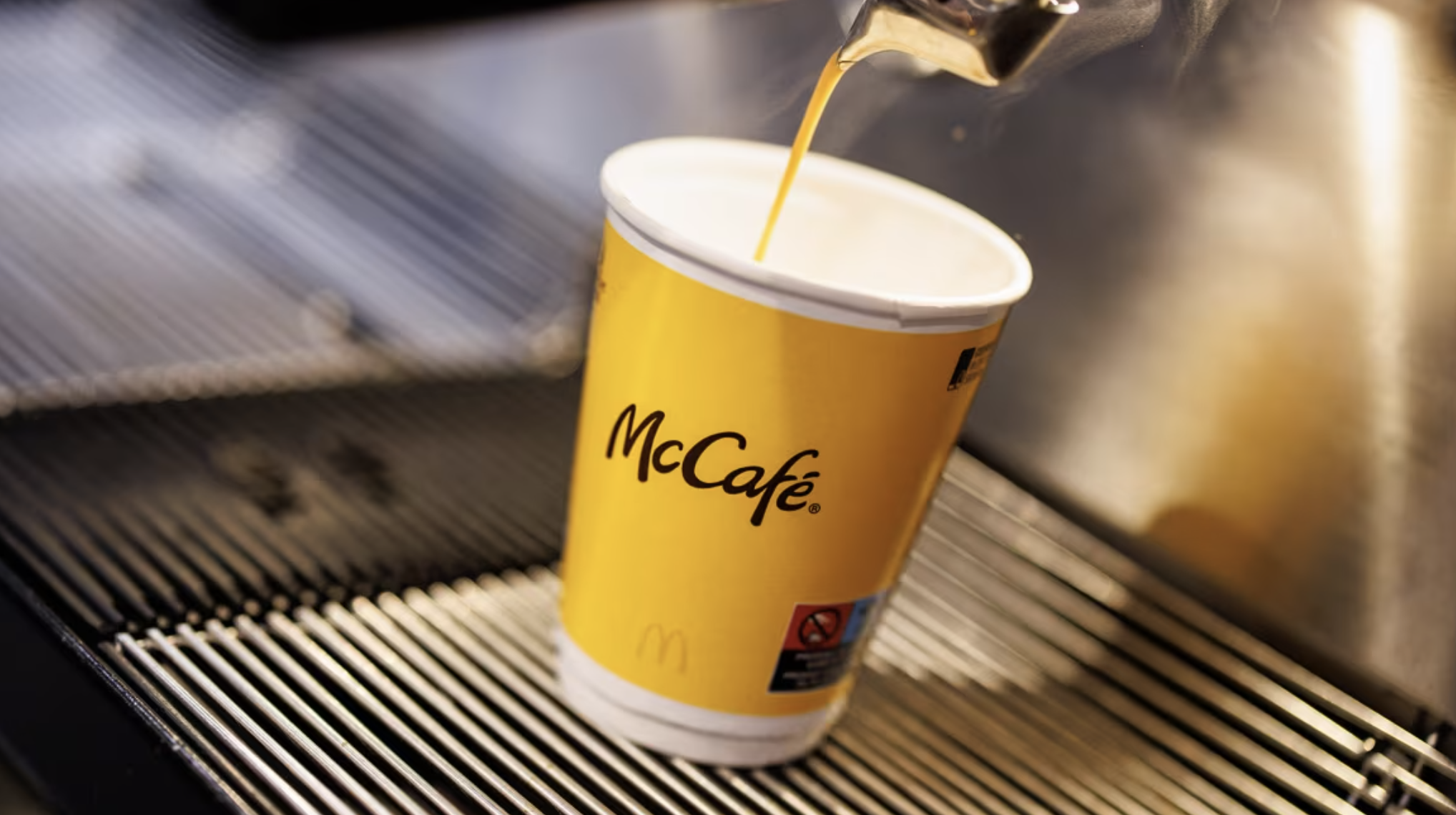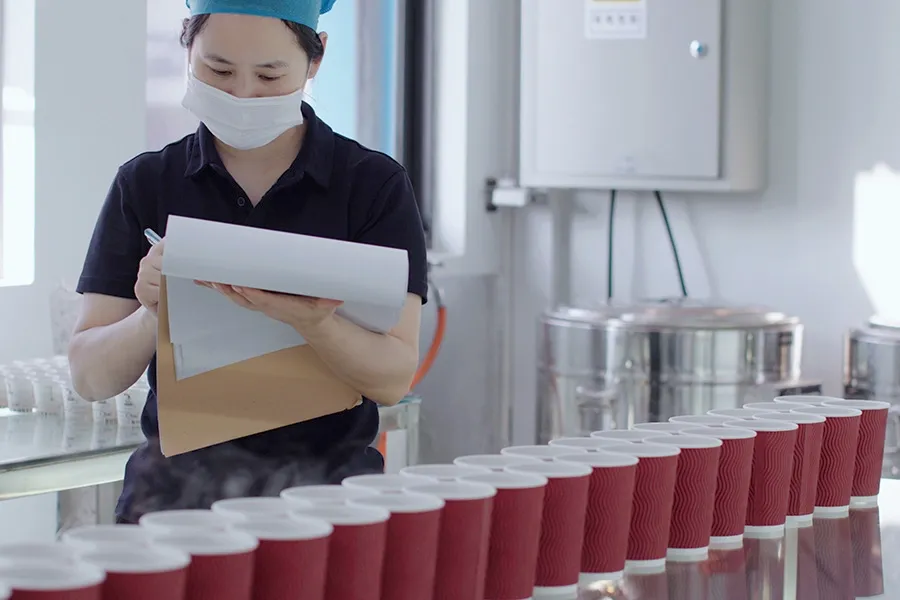Ever stared at your measuring cups wondering exactly how many ounces are in that cup of coffee? Whether you’re brewing your morning coffee, following a recipe, or measuring liquid ingredients, understanding cup to ounce conversions is essential for both everyday cooking and precise measurements.
Maybe you’re trying to follow an international recipe, or you’re measuring protein powder for your post-workout shake. I’ve been there, and I know how frustrating these measurement mysteries can be. Let’s solve this common kitchen conversion puzzle once and for all.
The quick answer: 1 cup equals 8 fluid ounces (fl oz) for liquids. However, for dry ingredients, the conversion varies by ingredient density. This is why professional bakers prefer weight measurements for consistent results.
I remember the first time I tried converting a British recipe to American measurements. What should have been a simple banana bread turned into a dense brick because I didn’t understand the crucial differences between dry and liquid measurements. This guide will help you avoid such kitchen disasters and master the art of measurement conversion.
What You’ll Learn
- Exact conversions for both liquid and dry measurements
- Professional tips for accurate measuring
- Digital tools and apps for quick conversions
- Common measurement mistakes and how to avoid them
- International measurement equivalents
Basic Cup to Ounce Conversions
What is an oz (Ounce)?
An ounce is a unit of measurement that comes in two distinct forms: fluid ounces (fl oz) and weight ounces (oz). Fluid ounces measure volume – the amount of space a liquid takes up – and are commonly used in the United States and British Imperial measurement systems. One fluid ounce equals approximately 29.57 milliliters. Weight ounces, on the other hand, measure mass and are equal to approximately 28.35 grams.
This distinction is crucial in cooking because while water weighs about 1 ounce per fluid ounce, other ingredients like flour or honey have different weight-to-volume ratios. In everyday cooking, you’ll most commonly encounter fluid ounces when measuring liquids like water, milk, or cooking oil, and weight ounces when measuring ingredients like meat, cheese, or dry goods.
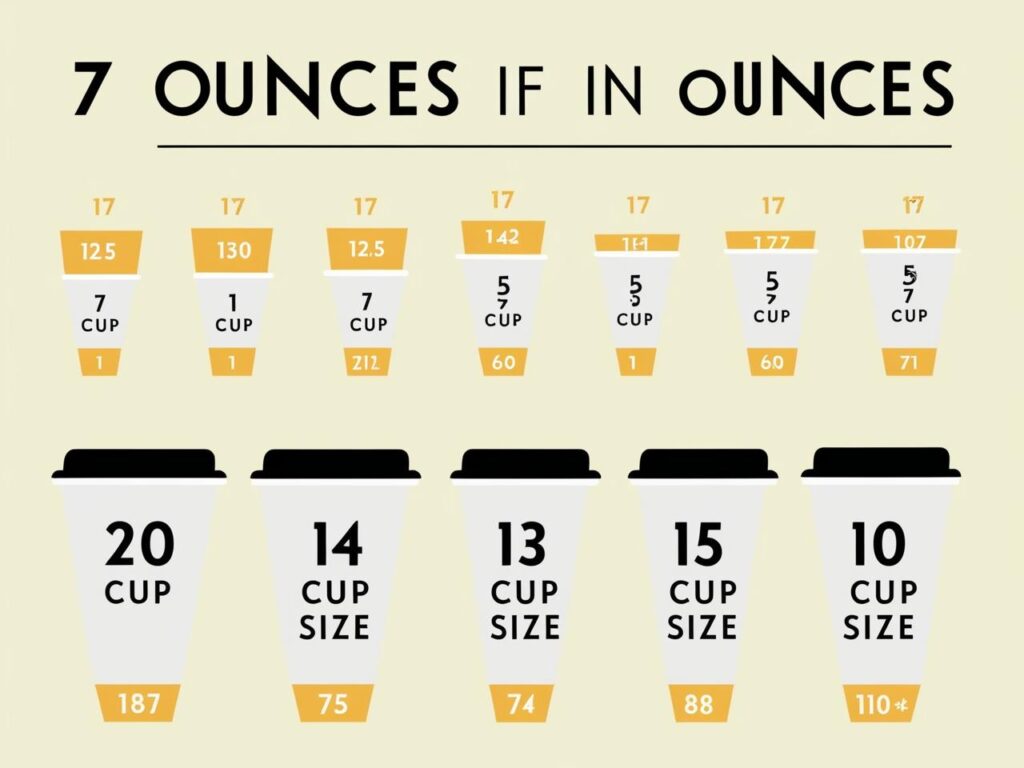
What is a Cup?
A cup is a volume measurement unit used primarily in cooking and food preparation. In the United States, one cup equals 8 fluid ounces or 236.588 milliliters. However, it’s important to note that cup measurements can vary by country – for instance, a metric cup used in Australia and Canada is 250 milliliters.
The US cup measurement is standardized across recipes and cooking tools in America, making it a reliable unit for consistent results. A cup can be subdivided into smaller measurements like half cups (4 fl oz), quarter cups (2 fl oz), and third cups (2.67 fl oz). While cups are convenient for home cooking, professional bakers often prefer weight measurements for greater precision, especially when working with dry ingredients like flour or sugar.
Here’s a comprehensive breakdown of common conversions:
Standard Liquid Measurements
- 1/4 cup = 2 fluid ounces
- 1/3 cup = 2.67 fluid ounces
- 1/2 cup = 4 fluid ounces
- 2/3 cup = 5.33 fluid ounces
- 3/4 cup = 6 fluid ounces
- 1 cup = 8 fluid ounces
- 1 1/2 cups = 12 fluid ounces
- 2 cups = 16 fluid ounces

Coffee Cup Measurements and Standards
When it comes to coffee cups, sizes can vary significantly:
- Standard Coffee Cup Sizes
- Regular coffee mug: 8-12 ounces
- Standard coffee maker cup: 5-6 ounces
- Starbucks sizes:
- Tall: 12 ounces
- Grande: 16 ounces
- Venti: 20 ounces
- Common Coffee Container Measurements
- Standard coffee cup: 6 oz (traditional measurement)
- Average mug size: 8-12 oz
- Travel mug: 15-20 oz
- Paper cup sizes: 4 oz, 8 oz, 12 oz, 16 oz, 20 oz
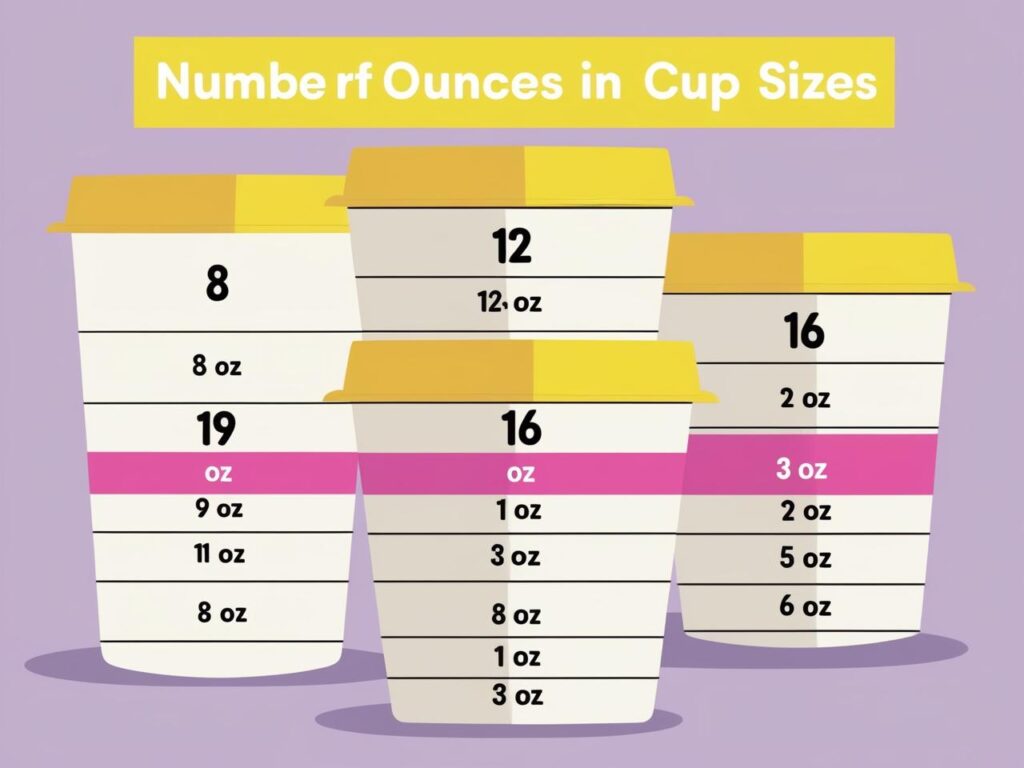
The Fundamental Difference: Volume vs. Weight
Let me share something that changed my cooking game forever: not all cups are created equal. Here’s why:
- Liquid Measurements
- Always measured by volume
- Consistent across ingredients
- 1 cup = 8 fluid ounces
- Uses liquid measuring cups
- Dry Measurements
- Can be measured by volume or weight
- Varies by ingredient density
- Weight is more accurate
- Uses dry measuring cups
Essential Conversion Tools
I keep these tools in my kitchen for foolproof measurements:
- Digital Kitchen Scale (Most Accurate)
- Measures in both ounces and grams
- Perfect for dry ingredients
- Eliminates conversion guesswork
- Liquid Measuring Cups
- Clear markings for fluid ounces
- Multiple measurement scales
- Angled for easy reading
- Dry Measuring Cups
- Nested set for different volumes
- Flat top for leveling
- Various standard sizes

Professional Tips for Perfect Measurements
After years of cooking and baking, I’ve learned these crucial tips:
For Liquid Ingredients
- Eye Level Reading
- Place measuring cup on flat surface
- Bend down to check at eye level
- Look for meniscus curve
- Temperature Considerations
- Hot liquids may expand
- Cold liquids may contract
- Measure at room temperature when possible
For Dry Ingredients
- Proper Filling Technique
- Spoon ingredients into cup
- Don’t pack unless specified
- Level with straight edge
- Special Ingredients
- Brown sugar: pack firmly
- Flour: spoon and level
- Cocoa powder: sift first
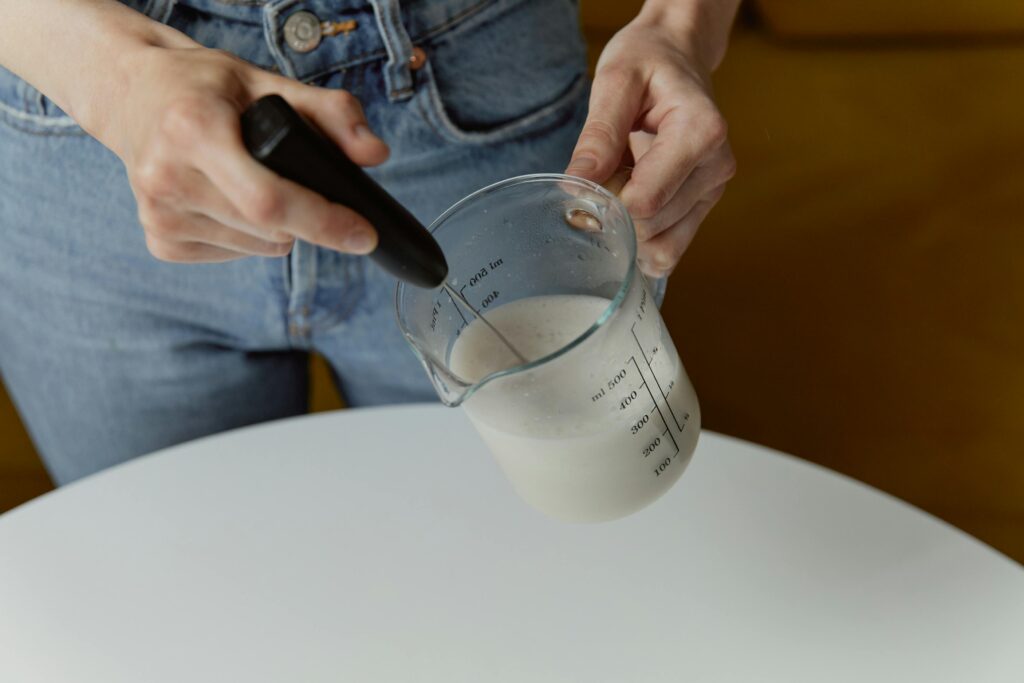
Digital Solutions for Modern Cooks
I love using technology to make cooking easier. Here are my favorite digital helpers:
- Kitchen Conversion Apps
- Kitchen Calc Pro
- Recipe Unit Converter
- Chef’s Calculator
- Smart Home Devices
- “Hey Google, how many ounces in a cup?”
- Alexa’s kitchen conversion skills
- Smart display recipe guides
International Cooking Considerations
When I’m working with international recipes, I keep these conversions handy:
- US vs. Metric
- US Cup = 236.59 ml
- UK Cup = 250 ml
- Japanese Cup = 200 ml
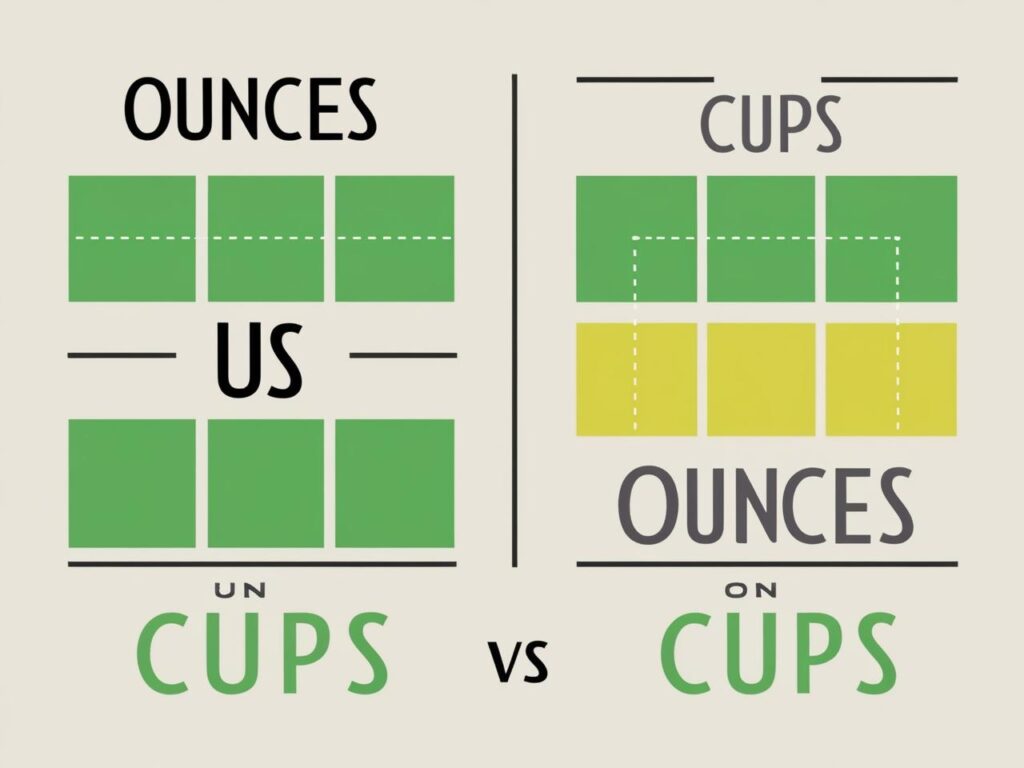
- Common International Conversions
- 1 US Cup = 16 tablespoons
- 1 US Cup = 48 teaspoons
- 1 US Cup = 240 milliliters
What Cup Sizes Should You Offer in Coffee Shop?
Choosing the right cup sizes for your coffee shop is a crucial business decision that directly impacts customer satisfaction and operational efficiency. The ideal cup size selection should balance customer preferences, profit margins, and practical considerations. Most successful coffee shops typically offer 3-4 standard sizes to accommodate different customer needs while maintaining operational simplicity.
When selecting cup sizes, consider these key factors:
- Target customer drinking habits
- Local market preferences
- Type of beverages served (hot vs. cold)
- Operational efficiency
- Storage capacity
- Cost-effectiveness
- Environmental impact
Standard size recommendations for a new coffee shop:
- Small (8-12 oz): Perfect for traditional espresso-based drinks
- Medium (12-16 oz): Ideal for regular coffee and lattes
- Large (16-20 oz): Popular for iced drinks and specialty beverages
- Extra Large (20-24 oz): Suitable for cold drinks and premium offerings
Global Coffee Chain Cup Size Comparison
| Chain & Size Name | Volume (oz) | Primary Use | Optimal Temperature | Cost/Profit Margin | Annual Sales Volume* |
|---|---|---|---|---|---|
| Starbucks | |||||
| – Tall | 12 oz | Hot drinks | 160-180°F | $0.30/$2.70 | 1.2B units |
| – Grande | 16 oz | Hot/Cold | 160-180°F/38-42°F | $0.35/$3.15 | 2.1B units |
| – Venti | 20/24 oz** | Cold/Hot | 38-42°F/160-180°F | $0.40/$3.60 | 1.8B units |
| ——————- | ————- | ————- | ——————— | ——————- | ——————— |
| Costa Coffee | |||||
| – Small | 8 oz | Hot drinks | 155-175°F | £0.25/£2.25 | 850M units |
| – Medium | 12 oz | Hot/Cold | 155-175°F/38-42°F | £0.30/£2.70 | 1.1B units |
| – Large | 16 oz | Hot/Cold | 155-175°F/38-42°F | £0.35/£3.15 | 950M units |
| ——————- | ————- | ————- | ——————— | ——————- | ——————— |
| Dunkin’ | |||||
| – Small | 10 oz | Hot drinks | 160-180°F | $0.25/$2.25 | 980M units |
| – Medium | 14 oz | Hot/Cold | 160-180°F/38-42°F | $0.30/$2.70 | 1.3B units |
| – Large | 20 oz | Cold/Hot | 38-42°F/160-180°F | $0.35/$3.15 | 1.1B units |
| ——————- | ————- | ————- | ——————— | ——————- | ——————— |
| Tim Hortons | |||||
| – Small | 10 oz | Hot drinks | 155-175°F | $0.25/$2.25 | 890M units |
| – Medium | 14 oz | Hot/Cold | 155-175°F/38-42°F | $0.30/$2.70 | 1.2B units |
| – Large | 20 oz | Hot/Cold | 155-175°F/38-42°F | $0.35/$3.15 | 950M units |
| ——————- | ————- | ————- | ——————— | ——————- | ——————— |
| McCafé | |||||
| – Small | 12 oz | Hot drinks | 155-175°F | $0.20/$2.30 | 780M units |
| – Medium | 16 oz | Hot/Cold | 155-175°F/38-42°F | $0.25/$2.75 | 920M units |
| – Large | 22 oz | Cold/Hot | 38-42°F/155-175°F | $0.30/$3.20 | 850M units |
*Annual sales volumes are approximate and based on 2023 global data
**Venti is 20 oz for hot drinks and 24 oz for cold drinks
Key Insights:
- Medium sizes typically generate the highest sales volume
- Profit margins increase with larger sizes
- Cold drink options usually offer larger volumes
- Most chains maintain 3-4 standard sizes
- Temperature ranges are fairly consistent across chains
- Cost-to-profit ratios improve with size increases

These findings suggest that offering 3-4 sizes with a focus on medium and large options provides the best balance of customer satisfaction and operational efficiency.
Summary and Key Takeaways
After years of working with these measurements, I can confidently say that mastering cup to ounce conversions will transform your cooking experience. Remember these essential points:
- Keep the basic conversion of 1 cup = 8 fluid ounces as your foundation
- Invest in quality measuring tools
- Consider the difference between dry and liquid measurements
- Use digital scales for precise measurements in professional settings
Remember, cooking is both an art and a science. While precise measurements are crucial, don’t let them intimidate you. With practice and the right tools, you’ll develop an intuitive understanding of measurements that will make you a more confident cook.
FAQ Guide: Cup to Ounce Conversions
How Many Cups In A Liter?
One liter equals approximately 4.227 cups. For practical kitchen use, you can round this to 4¼ cups. This conversion is particularly useful when working with international recipes or converting metric measurements to US standard measurements.
How many ounces are in a dry cup?
A dry cup measure equals 6.75-8 ounces by weight, depending on the ingredient. Unlike liquid cups which consistently equal 8 fluid ounces, dry cup weights vary significantly based on the ingredient’s density. For example, 1 cup of flour weighs about 4.25 ounces, while 1 cup of granulated sugar weighs about 7 ounces.
Is 3 oz 1/3 cup?
No, 3 fluid ounces is not exactly 1/3 cup. One cup equals 8 fluid ounces, so 1/3 cup equals 2.67 fluid ounces. This small difference can be significant in precise baking. When measuring liquids, use a liquid measuring cup with clear markings for most accurate results.
How many cups is 5 oz dry?
The conversion of 5 ounces dry to cups varies by ingredient. For all-purpose flour, 5 ounces equals approximately 1⅛ cups. For granulated sugar, 5 ounces equals about ⅔ cup. Always check ingredient-specific conversions for accuracy.
Is 1 cup 8 oz or 16 oz?
One cup equals 8 fluid ounces for liquid measurements. However, when measuring dry ingredients by weight, 1 cup can equal different ounce measurements depending on the ingredient. Don’t confuse fluid ounces (volume) with ounces (weight).
How do I measure 1/3 of a cup?
To measure 1/3 cup, use a proper 1/3 measuring cup. If you don’t have one, use tablespoons: 1/3 cup equals 5 tablespoons plus 1 teaspoon. For liquid measurements, use a liquid measuring cup with clear third-cup markings.
Is 1 cup dry the same as 1 cup wet?
While both dry and liquid measuring cups hold the same volume (8 fluid ounces), they’re designed differently for accuracy. Dry measuring cups should be filled to the brim and leveled, while liquid cups have space above the measurement line to prevent spilling.
Does 24 oz equal 1 cup?
No, 24 fluid ounces does not equal 1 cup. One cup equals 8 fluid ounces, so 24 fluid ounces equals 3 cups. This conversion applies to liquid measurements only. For dry ingredients, weight-to-volume conversions vary by ingredient.
How many cups is 8 oz dry?
**For dry ingredients, 8 ounces by weight can equal different cup measurements depending on the ingredient. For example:
- All-purpose flour: 8 oz = about 1¾ cups
- Granulated sugar: 8 oz = about 1⅛ cups
- Confectioners’ sugar: 8 oz = about 2 cups**
How Many Ounces In A Cup Of Shredded Cheese?
One cup of shredded cheese typically weighs 4 ounces. However, this can vary based on the type of cheese and how finely it’s shredded. For grated hard cheese like Parmesan, 1 cup may weigh closer to 3 ounces.
How Many Ounces In A Cup of Coffee?
One cup of coffee equals 8 fluid ounces in the US standard measurement system. However, note that a “coffee cup” on many coffee makers is actually 5-6 fluid ounces, and a standard coffee mug typically holds 8-12 fluid ounces.
How Many Ounces In A Cup Of Flour?
One cup of all-purpose flour weighs approximately 4.25 ounces or 120 grams. This measurement assumes the flour is spooned into the measuring cup and leveled off, not scooped directly with the measuring cup.
How Many Ounces In A Cup Of Sugar?
One cup of granulated white sugar weighs approximately 7 ounces or 200 grams. This measurement is consistent when properly measured. Brown sugar weighs slightly more at about 7.5 ounces per cup when packed.
How Many Ounces In A Cup Of Butter?
One cup of butter equals 8 ounces by weight or 227 grams. This is equivalent to 2 sticks of butter in the United States. Most butter packaging includes measurements for easy conversion.
How Many Ounces in a Cup of Water?
One cup of water equals 8 fluid ounces exactly. This is a standard liquid measurement in the US system and remains consistent regardless of temperature (though there might be slight variations due to expansion/contraction).
How Many Ounces in a Cup of Milk?
One cup of milk equals 8 fluid ounces. This measurement remains consistent for all types of milk (whole, skim, 2%, etc.) as it’s a liquid measurement based on volume, not weight.
How Many Ounces in a Cup of Oil?
One cup of oil equals 8 fluid ounces. This conversion is consistent for all types of liquid oils (vegetable, olive, canola, etc.) as it’s a volume measurement.
How Many Ounces in a Cup of Honey?
One cup of honey equals 12 ounces by weight, though it still occupies 8 fluid ounces by volume. Honey is denser than water, which is why it weighs more per cup.
How Much Is 1 Cup In Grams?
**The gram measurement for 1 cup varies by ingredient:
- Water: 240 grams
- All-purpose flour: 120 grams
- Granulated sugar: 200 grams
- Brown sugar (packed): 220 grams**
How Many ML Is In A Cup?
One US cup equals 236.588 milliliters (ml). For practical cooking purposes, this is often rounded to 240 ml. Note that metric recipes might use 250 ml as a cup measurement.
Are 2 Tablespoons Equal To 1 Ounce?
Yes, 2 tablespoons equal 1 fluid ounce for liquid measurements. This conversion is helpful when scaling recipes up or down. Remember that this applies to volume measurements, not weight.
How Many Pints In A Quart?
There are 2 pints in 1 quart. The full conversion chain is: 1 quart = 2 pints = 4 cups = 32 fluid ounces.
How Many Cups Are In A Gallon?
There are 16 cups in 1 gallon. The conversion chain is: 1 gallon = 4 quarts = 8 pints = 16 cups = 128 fluid ounces.


